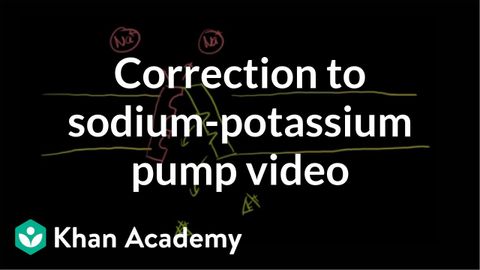
Subtitles & vocabulary
Correction to Sodium and Potassium Pump Video
00
Cheng-Hong Liu posted on 2014/11/20Save
Video vocabulary
potential
US /pəˈtɛnʃəl/
・
UK /pəˈtenʃl/
- Adjective
- Capable of happening or becoming reality
- Having or showing the capacity to develop into something in the future.
- Uncountable Noun
- someone's or something's ability to develop, achieve, or succeed
A2TOEIC
More negative
US /ˈnɛɡətɪv/
・
UK /'neɡətɪv/
- Noun
- The opposite to a positive electrical charge
- In grammar, containing words such as 'no' or 'not'
- Adjective
- Being harmful, unwanted or unhelpful
- In mathematics, being less than zero
A2
More rest
US /rɛst/
・
UK /rest/
- Noun (Countable/Uncountable)
- Time when one relaxes, sleeps, or is inactive
- State in which there is a lack of motion
- Verb (Transitive/Intransitive)
- To stop working or avoid activity to recover
- (Of dead person) to lie in a grave
A1
More positive
US /ˈpɑzɪtɪv/
・
UK /ˈpɒzətɪv/
- Adjective
- Showing agreement or support for something
- Being sure about something; knowing the truth
- Noun
- A photograph in which light areas are light and dark areas are dark
A2
More Use Energy
Unlock All Vocabulary
Unlock pronunciation, explanations, and filters
